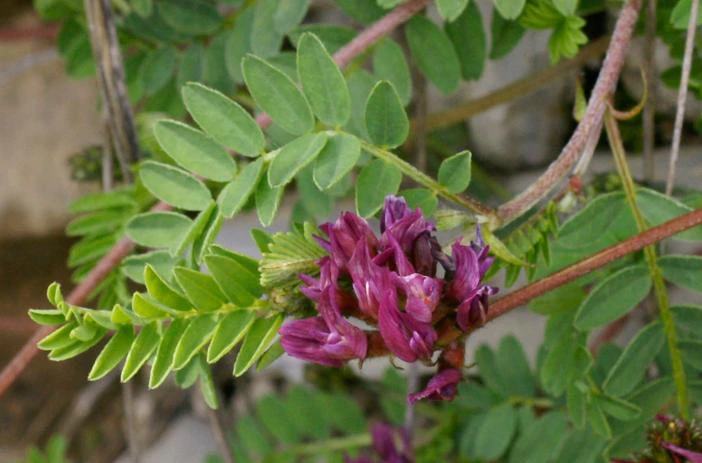Purple Milkvetch
(Astragalus hypoglottis)
Purple Milkvetch (Astragalus hypoglottis)
/
/

Robert Flogaus-Faust
CC BY 4.0
Image By:
Robert Flogaus-Faust
Recorded By:
Copyright:
CC BY 4.0
Copyright Notice:
Photo by: Robert Flogaus-Faust | License Type: CC BY 4.0 | License URL: https://creativecommons.org/licenses/by/4.0 | Uploader: Robert Flogaus-Faust | Publisher: Wikipedia Commons














Estimated Native Range
Climate Requirements for Newark, California
| This Plant | Your Site | Plant Suitability for Your Location | ||
|---|---|---|---|---|
| • Precipitation | 9" - 71" | 14" | Your precipitation may be insufficient for this plant. Irrigate N" / year. | Irrigate N" / year |
| • High Temp. | 46°F - 92°F | 79°F | Your summer temperatures are normal for this plant. | Excellent |
| • Low Temp. | -19°F - 43°F | 41°F | Your winter temperatures are normal for this plant | Excellent |
This plant should grow well at your location with about N inches per year (Y minutes per month) of irrigation.
Summary
Astragalus hypoglottis, commonly known as Purple Milkvetch or Low Rattlepod, is a perennial herb native to a variety of habitats including dry sandy soils, grasslands, and steppes across Europe. It typically grows to a height of 0.5-1.5 feet (0.15-0.5 meters) and is known for its pinnate leaves and erect, flowering stems. The plant produces showy, purple flowers during the summer months, which are arranged in dense, globular clusters and are highly attractive to pollinators.
Purple Milkvetch is valued for its drought tolerance and ability to thrive in poor soils, making it a suitable choice for rock gardens, xeriscaping, and restoration projects. It is also used in traditional medicine in some cultures. In cultivation, it requires full sun exposure and well-drained sandy or loamy soils. It is a low-maintenance plant that needs minimal water once established. While it is not commonly found in nurseries, it can be propagated by seed. Gardeners should be aware that, like other members of the Astragalus genus, it may be toxic to livestock.CC BY-SA 4.0
Purple Milkvetch is valued for its drought tolerance and ability to thrive in poor soils, making it a suitable choice for rock gardens, xeriscaping, and restoration projects. It is also used in traditional medicine in some cultures. In cultivation, it requires full sun exposure and well-drained sandy or loamy soils. It is a low-maintenance plant that needs minimal water once established. While it is not commonly found in nurseries, it can be propagated by seed. Gardeners should be aware that, like other members of the Astragalus genus, it may be toxic to livestock.CC BY-SA 4.0
Plant Description
- Plant Type:
- Height: 0.5-1.5 feet
- Width: 1-2 feet
- Growth Rate: Moderate
- Flower Color: Purple
- Flowering Season: Summer
- Leaf Retention: Deciduous
Growth Requirements
- Sun: Full Sun
- Water: Low
- Drainage: Fast, Medium
Common Uses
Bee Garden, Butterfly Garden, Drought Tolerant, Low Maintenance
Natural Habitat
Native to a variety of habitats including dry sandy soils, grasslands, and steppes across Europe
Other Names
Common Names: Low Rattlepod
Scientific Names: Astragalus hypoglottis , Astragalus dasyglottis var. hypoglottis , Astragalus phacaceus , Astragalus purpureus , Phaca hypoglottis , Solenotus hypoglottis , Tragacantha hypoglottis
GBIF Accepted Name: Astragalus hypoglottis